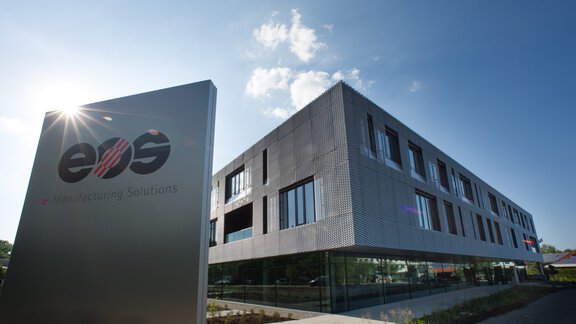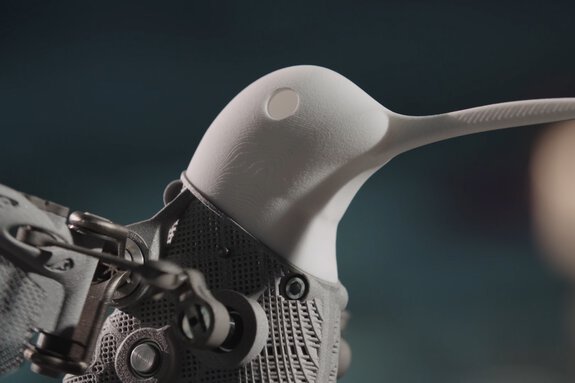5 Important Trends for Industrial 3D Printing in 2023
What will be the key trends 2023 for industrial 3D printing?
It has been a challenging three years for manufacturing industries worldwide, and it looks set to continue into 2023 with uncertainty over fuel and production costs and the continuing war in Ukraine. Despite these challenges, Additive Manufacturing (AM) has played a vital role in helping manufacturers overcome supply chain disruption while also enabling them to produce final products that are stronger, lighter, and redesigned to contain fewer parts.
The industrial 3D printing market has been seeing strong growth, which is expected to continue according to CONTEXT, which predicted in its Q1 2022 Additive Manufacturing and 3D Printing Report that 3D printing materials, hardware, and services sales combined will rise from $12 billion in 2021 to an estimated $38 billion by 2026. These are incredible figures, but the market is developing in other ways as confidence increases around Additive Manufacturing and associated digital manufacturing technologies. Here is our take on the trends for 2023 and beyond.
Additive Manufacturing Trend #1: The Industry Upskill
The Additive Manufacturing world still falls into two groups: Advanced users who are invested in 3D printing technologies and want increased reliability and performance from their printers. And exploratory users that can see the value of Additive Manufacturing but need support on how to deploy it and overcome their manufacturing status quo.
Additive Manufacturing will continue to build industrial acceptance, and therefore competitive business opportunities will accelerate across large and small manufacturers. The advantages of Additive Manufacturing, being promised and realized for years in smaller manufacturers, will start to be discovered on a larger industrial scale. Training and upskilling will be a core component of this. We expect to see continued growth in demand for online and virtual training and education and requests to visit our digital manufacturing facilities, where customers can experience how a full-scale digital manufacturing production line can operate.
Additive Manufacturing Trend #2: Application-Driven Production
A trend that will start to gain further traction is that factory concepts are application-driven. This will require the optimization of the industrial 3D printers, periphery, and post-processing to maximize throughput and minimize cost. Optimizing an Additive Manufacturing production line can move a business case from an unviable to a viable scenario or increase the potential for profit and design innovation. This will mean a change for many manufacturers, as only some 3D printing application combinations would have the same optimized solution.
Additive Manufacturing Trend #3: The Digital Thread
With Additive Manufacturing, manufacturers are now connecting the physical supply chain with a digital thread that allows them to manage products more efficiently from concept to end-of-life. Manufacturing can be distributed across any location with a digital manufacturing system in place, simply by sending a file. This decentralization enables a more collaborative, transparent and efficient supply chain, as was highlighted by the role of Additive Manufacturing during the Covid-19 pandemic in overcoming supply chain challenges.
Additive Manufacturing Trend #4: Hybrid Materials Innovation
Going forward, we will continue to see an actual acceleration of the synergy between material science, manufacturing, and technology – unlocking innovation opportunities that have not been conceived before. While substantial investments in all parts of the Additive Manufacturing ecosystem are fueling growth, it would be hard to overstate the significance of 3D printing materials.
We will start to see the availability of hybrid 3D printing materials, uniquely engineered and application-specific, to meet the needs of different challenges that each industry faces. Material characteristics such as ductility and tensile strength can be modified by adjusting process parameters at different points in the additive build process.
Additive Manufacturing Trend #5: Sustainability
Environmental sustainability has been an important trend for several years as manufacturers and brands move to lessen their impact on our world. There has been lots of action on lowering energy consumption, reducing waste in manufacturing, and steadily removing non-recyclable materials from products and packaging. End customers are now starting to demand evidence of sustainability credentials of the products and services they buy.
People want to lead more sustainable lives, and new industries such as renewable energy, electromobility, and changes in the lifestyle sector, mean that sustainability is undoubtedly here to stay, and manufacturers are realizing this.
For the Additive Manufacturing industry, we will see continued innovations throughout 2023 to support this trend. While Additive Manufacturing is more sustainable than traditional manufacturing by definition, we’ll also see more manufacturers using the data machines produce on the manufacturing workflows and processes to help them evidence the efficiency of their manufacturing processes for customers.
Looking Ahead
Like many other sectors, global manufacturing is being substantially affected by events on the world stage. It is hard to predict how it will fare in 2023, but every time the industry has faced challenges, it has shown how tenacious and innovative it can weather the storm. Additive Manufacturing has proved itself in recent years to give manufacturers and supply chains a vast amount of flexibility and is set to become the dominant manufacturing technique for certain applications.



